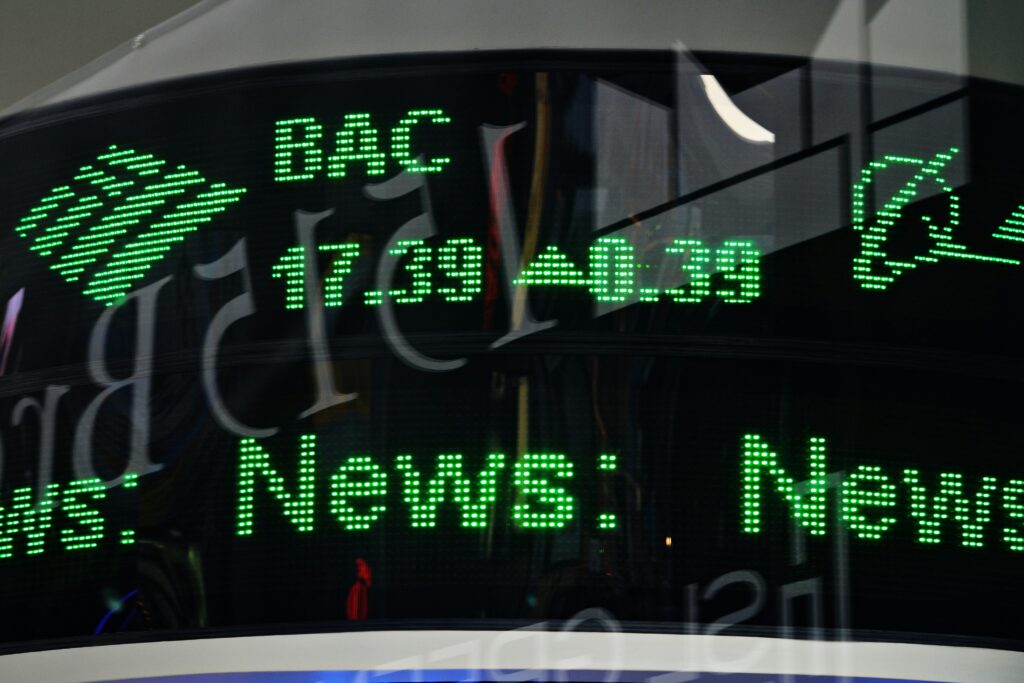Intro: A Year of Defining Moments
The past year didn’t creep in quietly—it slammed into headlines. From sudden leadership shakeups to fast-moving wars, global events moved faster than most feeds could process. 2023–2024 forced a recalibration of how stories unfold and how quickly public perception can shift. Change was constant, often chaotic.
In that chaos, journalism proved what it’s still good for: clarity. When deepfakes blurred truth, when misinformation ran wild, it was real-time reporting—rooted in facts and context—that helped steady the signal. Speed mattered, but accuracy mattered more. Analysis layered on top of facts helped audiences not just know what happened, but why it mattered.
The hard part? Cutting through the noise. Attention is finite, fear travels fast, and the volume of content has never been higher. Responsible media had to work smarter, not just louder—filtering for relevance, not just virality. The result? A global story still being written, one careful piece at a time.
Global Conflicts That Shifted Power Dynamics
Escalating Global Tensions
In 2023–2024, international conflicts redefined geopolitical stability. From ongoing wars to surprise peace accords, power dynamics shifted in ways that will shape decades to come.
Key hotspots saw dramatic changes:
- Eastern Europe: Continued conflict and renewed military offensives reshaped border realities and humanitarian responses.
- Southeast Asia: Rising tensions over territorial claims led to naval standoffs, prompting new diplomatic alignments.
- Middle East: Ceasefires, escalations, and fragile negotiations tested regional resilience and foreign policy priorities.
These developments weren’t isolated—they rippled across global trade, migration, and security structures.
Reporting on the Frontlines
The role of journalism remained pivotal. War correspondents, data analysts, and local citizen-reporters helped the world interpret complex events in real time.
Essential media contributions included:
- Combatting Disinformation: Newsrooms rapidly verified footage and claims circulating on social media.
- Humanizing the Headlines: On-the-ground reporting brought global attention to civilian stories often lost in broader strategy discussions.
- Clarifying Global Stakes: Expert commentary and investigative journalism broke down what shifting alliances mean for international governance.
Impact on Alliances and Civilian Life
These conflicts did more than redraw political maps—they reshaped relationships among world powers and deeply affected ordinary lives.
Broader effects included:
- Redefined Alliances: Countries reassessed long-standing treaties and trade partnerships, forming unexpected coalitions or quiet exits.
- Rising Humanitarian Needs: Displacement, energy crises, and food insecurity surged in neighboring regions.
- Public Sentiment Shifts: Citizens across multiple nations became more vocal, either in support or strong opposition to their governments’ foreign policy.
The way nations—and their people—responded revealed a growing demand for transparency, diplomacy, and renewed emphasis on peace-building.
Environmental Disasters With Long-term Implications
In 2023 and early 2024, nature didn’t whisper—it roared. From flash floods in Libya to wildfires raging across Canada, and earthquakes rattling regions unprepared, natural disasters dominated global headlines. These weren’t isolated freak events. They were dense, destructive, and far-reaching—testing infrastructure, exhausting rescue teams, and claiming lives. Real peoples’ homes gone. Schools flattened. Power grids dark for days.
But what cut deepest was the pattern. The silent thread tying these disasters together: climate change. Higher ocean temperatures fed cyclones. Drier forests turned into tinderboxes. Urban sprawl turned rainfall into walls of water with nowhere to go. Scientists have been ringing the alarm, but now, average citizens and even skeptics are connecting dots in real time. The climate crisis is no longer a theory—it’s a daily headline.
Recovery, where it’s happened at all, tells a mixed story. Wealthier nations mobilized aid and began rebuilding—shakily, but quickly. In contrast, many areas hit hardest were already fragile. On the ground, emergency tents become semi-permanent homes. Promises of infrastructure upgrades get stuck behind bureaucracy or politics. If disaster is the spotlight, recovery is the backstage no one visits after opening night.
The takeaway? Disasters aren’t just dramatic moments—they’re warning signals. They demand not just cleanup crews, but deep structural change. And the media’s role isn’t just to document the damage, but to keep the spotlight on the slow, difficult work of rebuilding.
Breakthroughs in Science and Technology
2023–2024 was the tipping point: AI went from a niche tool to a cultural force. Generative models like ChatGPT, image creators, and autonomous agents broke into mainstream workflows—streamlining productivity across industries. Journalists used it for research, students for study guides, and creators for editing schedules and scripting aids. The promise is speed and clarity. The risk? Losing the human thread. Concerns around AI bias, misinformation, and job displacement deepened alongside its popularity. Ethics are no longer optional—they’re the price of trust.
Meanwhile, medicine made its own headlines. Experimental gene-editing therapies showed early success. RNA-based treatment expanded into diseases beyond COVID. Portable diagnostics became smarter, with AI-driven imaging accuracy catching things doctors might miss. But with each new announcement came a wave of skepticism. Not because the science isn’t impressive, but because tech headlines often blur the line between early-stage efficacy and global implementation.
The bottom line: science and tech are moving fast. But smart observers will ask how far along the road we really are. Hype cycles are loud. Progress, when real, tends to speak quietly—but leaves a bigger mark.
Shifts in Political Power and Policy
From surprise election upsets to sweeping policy pivots, this past year reshaped the global political map. Across several continents, leadership changes weren’t just ceremonial—they set off chain reactions. In places like Argentina and Poland, new administrations came to power with mandates to overhaul economic models, redefine foreign policy, or challenge democratic institutions. Voters didn’t just want change; they demanded it.
Meanwhile, landmark legislation passed in countries like the U.S., India, and Germany pushed key issues—data privacy, energy transition, reproductive rights—into the legislative spotlight. These weren’t tweaks to existing frameworks; they were rewrites that signaled clear ideological shifts. Flashpoints emerged almost overnight. In some cases, the push led to forward momentum. In others, it met fierce resistance.
The public didn’t stay silent. Mass protests, walkouts, and digital campaigns reflected rising polarization. Civic engagement spiked, for better or worse, as ordinary people realized that policy wasn’t just paperwork—it was personal. These aren’t just political stories; they’re social flashpoints that will echo into the next decade.
Cultural and Social Movements
Viral Moments with Deeper Meaning
2023–2024 was a year where single images, short clips, and social media trends often ignited global conversations. But beneath each viral post was often a simmering issue—economic pressure, inequality, systemic injustice—that had been building for years.
- Memes and reels became modern protest posters
- Short-form content funneled attention to grassroots issues
- Public sentiment shifted quickly—and visibly—in reaction to singular moments
These moments weren’t isolated. They revealed public frustration, cultural shifts, and unspoken generational divides that were ready to surface.
New Voices at the Center
A defining feature of this era: mainstream discourse isn’t just shaped by legacy media anymore. Independent commentators, community leaders, and digital activists gained major influence.
- Marginalized groups used social platforms to bypass gatekeeping
- Creators turned personal experience into persuasive storytelling
- Young activists led discussions on everything from climate justice to political accountability
This rise of new voices enriched public debate and challenged traditional power structures in journalism, business, and politics.
Live Media’s Role in Momentum
The urgency of many movements was amplified by live coverage. Whether through livestreams, breaking news alerts, or unfolding Twitter threads, these tools added real-time energy to causes once hidden behind delays or filters.
- Rapid updates helped mobilize support in minutes
- Audiences engaged directly with events as they unfolded
- Broadcasters adapted: field reporters went digital, and newsrooms covered movements collaboratively
Live media transformed how movements gained traction—making visibility not just a goal, but a catalyst for action.
Real-Time Reporting: The Frontline Advantage
When news breaks now, it breaks live. The outlets that win are the ones ready to move—not later, not tomorrow, but in the moment. In 2023–2024, we saw how crucial speed and accuracy have become. Journalists on the ground delivered raw footage, short updates, and verified intel from unfolding crises, whether it was a diplomatic standoff, a city under floodwater, or a landmark protest. That rapid reporting didn’t just inform—it built trust.
Audiences no longer wait for the 6 PM bulletin. They want updates fast, and they want them real. Reporters who could maintain composure and clarity under pressure earned credibility. But speed alone isn’t a win. Some outlets faltered—rushing facts, missing context, or stoking panic. The takeaway: fast matters, but only if standards hold.
Live coverage proves humanity. It’s flawed, it breathes, and it reacts. That’s exactly why it resonates. For journalists, the challenge is to stay nimble and accurate all at once. For viewers, it’s a chance to feel part of something real—as it happens.
(Related read: Live Coverage, Breaking Stories and Real-Time Updates)
Wrap-Up: What These Stories Say About Us
At first glance, the major headlines of the past year seem scattered—a war here, a flood there, a new technology grabbing market share. But under the surface, clear patterns emerge. These aren’t isolated events. They’re signals of a larger transition: fractured systems under pressure, societies demanding change, and technology reshaping how every story unfolds. Whether it’s geopolitical shifts or environmental upheaval, the common thread is complexity—and how we respond to it.
This is where media literacy steps in. In a hyper-speed news cycle, the ability to pause and sort fact from noise isn’t optional—it’s essential. Readers and viewers aren’t just passive consumers anymore. They’re part of a feedback loop that influences what gets attention and what doesn’t. Understanding that chain—what’s said, what’s omitted, who benefits—is now a core skill.
So what’s next? Better stories, told with fewer assumptions. Newsrooms that dig deeper, not faster. And audiences that ask harder questions, and stay curious long after the headline fades. The world isn’t quieting down. But with sharper thinking and more thoughtful media, we have a shot at making better decisions—individually and collectively.


